Last Updated on March 11, 2025 by Packoi Team
The production of recycled paper, the recycling from shredded paper to newspaper scraps, plays a vital role in protecting natural resources and reducing the demand for pulp.
Join us to learn more about how using recycled paper can support an environmentally friendly future and make a big difference in your work.
What Is Recycled Paper?
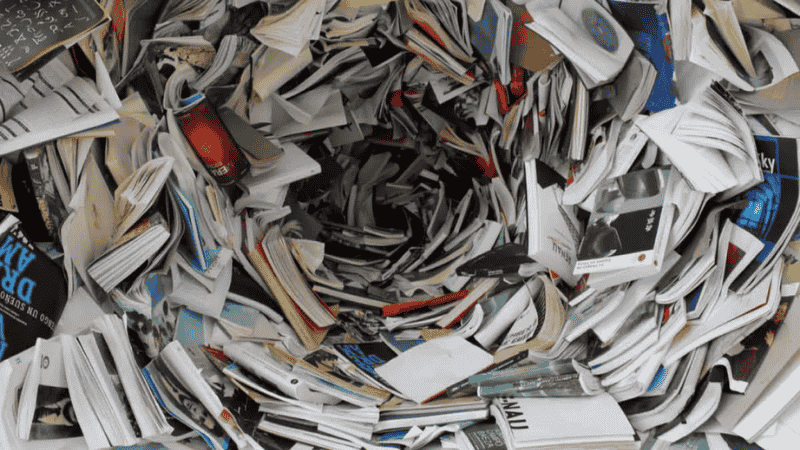
Recycled paper is a type of paper that is created by taking paper that has already been used and recycling it into new paper. The process of recycling paper involves collecting used paper, sorting it, shredding it, turning it into pulp, and converting it into new paper.
By using recycled paper, manufacturers, companies, and individuals can help reduce waste and conserve natural resources while also reducing the impact of manufacturing on the environment.
The diverse materials that can be recycled to make paper include pulp, waste paper, scrap paper, recovered paper, and even consumer-recycled items like junk mail that can all be utilized in the recycling process to create pulp. They take in the mixed pulp paper collected from various sources and sort it according to its grade and quality.
Once sorted, the pulp papers go through a series of steps to remove impurities such as ink and contaminants. The cleaned wood pulp is then transformed into sheets or rolls of new paper using specialized machinery within the paper mill itself.
By using paper recycling and choosing recycled papers made from pulp, we contribute to a more sustainable future.
Recycled Paper vs. Traditional Paper
Recycled paper is recyclable, environmentally friendly, and resource-saving for its own reasons. But why should we insist on promoting the use of recycled paper instead of traditional paper? Now let’s take a closer look at the problems with traditional paper.
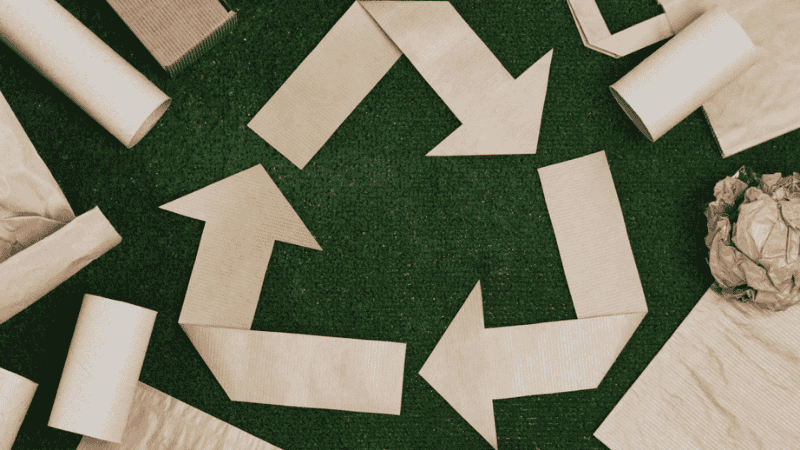
Environment Impact
The production of traditional paper can be environmentally harmful, including through deforestation and the loss of biodiversity. For example, to produce one ton of paper, approximately 20 trees need to be cut down.
This can lead to a loss of habitat for animals and a decrease in biodiversity. Additionally, paper production can be energy- and water-intensive, which can contribute to pollution and climate change.
Limited Natural Resources
As mentioned before, trees are a limited natural resource, and there is a risk of running out of them. This can lead to an increase in the cost of paper as well as the destruction of ecosystems.
Waste Management
Traditional paper production also generates large amounts of waste through energy consumption, which can lead to overfilled landfills. The burning of paper leads to the release of harmful pollutants into the environment, including greenhouse gases.
Recycling paper, on the other hand, can help reduce the amount of paper waste sent to landfills and the environmental impact of paper production.
Cost

The cost of producing traditional paper can be significantly higher than the cost of recycling it. The cost of producing virgin paper includes the cost of tree farming, processing wood into pulp, and manufacturing paper.
This is compared to the cost of recycling paper, which includes the amount recycling paper reduces the cost of collecting, processing, and manufacturing recycled paper, which can be significantly lower.
Quality
Traditionally, recycled paper has been considered inferior to virgin paper. This is because recycled paper can contain imperfections and be more prone to tearing and wrinkles. However, the quality of recycled paper has improved over the years, and today, recycled paper can be as good as virgin paper in terms of quality.
By embracing the use of recycled paper, we can make a positive impact on our environment while still meeting our everyday needs for this essential material. Let’s choose wisely and help create a more sustainable future with every sheet of recyclable paper we use.
Benefits of Using Recycled Paper
Through the above, we understand the problems faced by traditional methods of producing recycled paper. Next, we take a look at the benefits of using recycled paper, and more directly know why more and more people and more enterprises use recycled paper
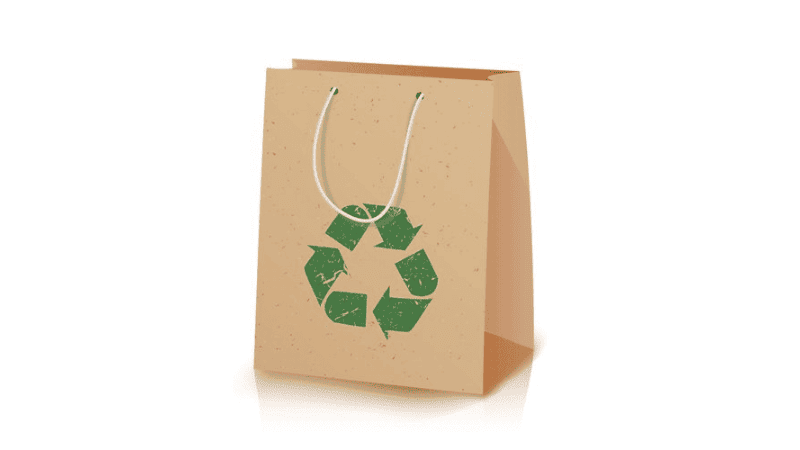
Environmental Benefits
Recycled paper is the best option for protecting our natural resources and reducing waste, resulting in lower greenhouse gas emissions, less deforestation, and reduced water and chemical usage.
The use of recycled paper conserves natural resources by reducing the requirement for virgin paper. Recycling paper is also a recycling stream that helps reduce the amount of waste that ends up in landfills and oceans.
Cost Savings
Recycled paper is a cost-effective alternative to virgin paper due to the reduced need for processing and manufacturing copy paper. The cost benefits can be passed on to customers, making recycled paper a more cost-effective option.
Regulatory Compliance
Some countries or regions have regulations that require or encourage the use of recycled paper in certain products, such as paper cups and food and beverage containers.
Ready to Get Custom Packaging for Your Business?
start with a low minimum order quantity
Increased Customer Demand
Consumers are increasingly demanding more sustainable products, making recycled paper a popular choice. The perception of sustainability and responsibility can help improve your company’s reputation and brand image, leading to increased customer demand.
Reputational Benefits
The use of recycled paper signals a commitment to sustainability and responsible business practices, which can improve your company’s reputation and brand image, positively impacting your customer base.
Disadvantages of Recycled Paper
Recycled paper also has many advantages, but there are also some of its own defects, which we need to understand clearly and reasonably.
Quality concerns: Recycled paper can often have a lower quality than virgin paper due to the repeated processes of manufacturing and recycling packaging paper. The paper may be thicker, thinner, or more brittle, which can affect its appearance and durability.
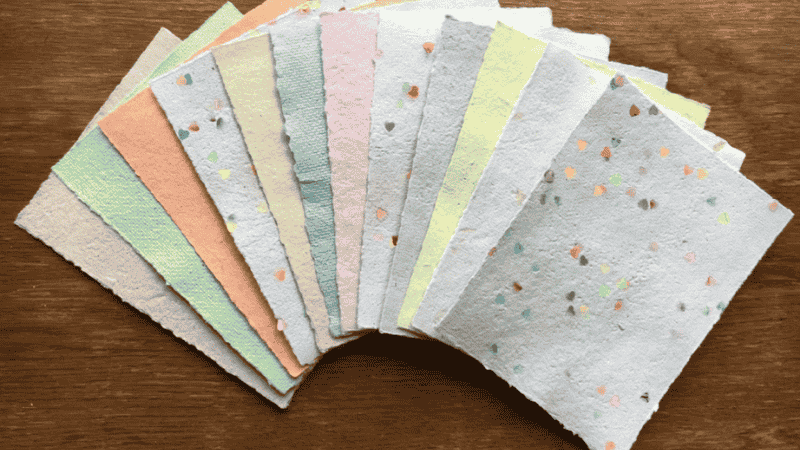
- Limited availability of recycled paper: Recycled paper is not as readily available as virgin paper, especially in developing countries. This can make it more challenging to source and may increase production costs.
- Safety concerns: Recycled paper often contains chemical additives that are used during the recycling process. These additives can be harmful to human health and the environment, requiring special handling and disposal procedures.
- Cost implications: Although recycled paper can be cheaper to produce than virgin paper, there are still costs associated with collecting, recycling bin sorting, and manufacturing it. This can make it a less cost-effective option for some businesses, particularly those with small production volumes.
- Limited product options: Recycled paper may be limited in terms of thickness, weight, and color, which can restrict its use in certain products, such as printing on paper towels or packaging.
When deciding whether to choose non-recycled paper or virgin paper, it’s essential to balance the environmental benefits with practical considerations. While recycled paper contributes positively towards sustainability goals, cost, and quality aspects should also be taken into account.
How to Identify Recycled Paper?
Although recycled used paper can be recycled and recycled paper has obvious characteristics, sometimes there will be similar paper, so what is the best way to correctly and quickly identify recycled paper?
labels or Certification
Look for labels or certifications that indicate that recycled paper uses these materials. This guarantees that the paper you use is made from recycled materials. Some common certifications include:
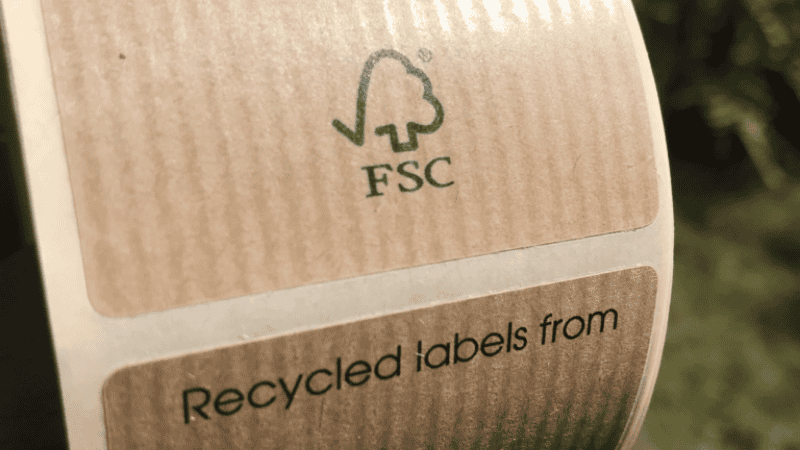
- Forest Stewardship Council (FSC)
- Sustainable Forestry Initiative (SFI)
- Forest Certification Accreditation Scheme (PEFC)
Check the Paper for Visible Features
- Color: Recycled paper may have a slight off-white or gray tint compared to regular white paper.
- Texture: It may feel slightly rough or have a different texture due to the recycling process.
- Spots: Look for spots or fibers embedded in the paper, which are remnants of previous use.
Identify Using Online Tools
In today’s digital age, there are a variety of online resources or mobile apps that can quickly identify and help you determine if a paper product is being recycled.
- Online databases: Websites like GreenBlue’s “How2Recycle” platform allow you to search for specific products to see if they contain recyclable content.
- Mobile apps: Apps like “RecycleSmart” allow you to scan the barcode on the package and receive immediate information about its recyclability.
Identifying recycled paper is essential for those who want to make environmentally conscious choices. By paying attention to labels, examining visual cues, and utilizing technology, you can easily determine whether a particular paper product is made from recycled materials.
Ready to Get Custom Packaging for Your Business?
start with a low minimum order quantity
This knowledge empowers individuals and businesses alike to support sustainable practices and contribute towards a greener future.
Recycled Paper Packaging: From Waste to Sustainable Solutions
Recycled paper packaging is a sustainable solution that uses waste paper as its main raw material. Enterprises can use recycled paper packaging, shopping bags made of recycled paper, retail bags, gift bags, cardboard boxes, packaging boxes, transportation boxes, and so on.
It will reduce the use of virgin wood, which is a limited and renewable resource, and decrease the volume of paper heading to landfills.
Innovative Approaches in Packaging Design
Packaging plays a crucial role in our daily lives, but its impact on the environment cannot be ignored. Thankfully, innovative approaches are emerging that utilize recycled raw materials to create sustainable solutions. One such solution is the use of recycled paper for packaging.
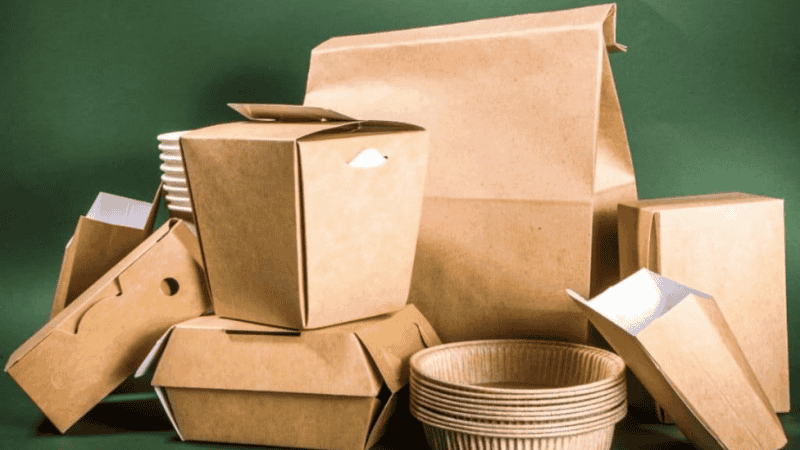
Positive Impact on Waste Reduction and Brand Reputation
By embracing recycled paper packaging, brands not only contribute to waste reduction but also enhance their brand reputation. Consumers are increasingly seeking out environmentally friendly products, and companies that prioritize sustainability gain a competitive edge.
The benefits of utilizing recycled paper packaging include:
- Waste Reduction: By diverting materials from landfills into recycling bins, brands actively participate in minimizing waste accumulation.
- Environmental Responsibility: Choosing recyclable materials such as paper demonstrates a commitment to preserving natural resources and reducing carbon footprints.
- Enhanced Brand Image: Brands that prioritize sustainability through eco-friendly packaging solutions often enjoy increased customer loyalty and positive public perception.
Recycled paper packaging offers an effective way to transform waste into sustainable solutions. Through innovative design approaches and the adoption of eco-friendly practices, brands can make a positive impact on both the environment and their reputation.
It’s time for all businesses to consider how they can incorporate recycled paper into their packaging strategies and join the movement toward a greener future.
How to be a Pro-Environmental Business
The environment affects the operation of business, and the protection of the environment is conducive to the sustainable development of business.
Being a pro-environmental business involves incorporating environmental factors into the operations and decision-making processes of the company. Here are some practical steps a business can take to become pro-environmental:
- Reduce waste: Businesses should aim to reduce their waste by implementing recycling programs, minimizing the use of single-use items, promoting the use of reusable items, and encouraging employees to adopt sustainable practices.
- Use renewable energy: Businesses should aim to reduce their carbon footprint by using renewable energy sources like solar panels or wind turbines. This can help reduce the company’s energy bills while also benefiting the environment by reducing emissions.
- Source sustainably: Businesses should source their products and services from sustainable sources whenever possible. This means buying from companies that have a commitment to sustainability, or those that use renewable energy, organic materials, and ethical labor practices.
- Greening the workplace: Businesses can encourage sustainable practices in the workplace by providing employees with facilities that support recycling and the use of eco-friendly materials. This could include the use of LED lighting, rainwater harvesting systems, and the provision of charging facilities for electric vehicles.
- Engage with the community: Businesses can show their commitment to sustainability by engaging with the community through sustainable initiatives such as tree-planting projects, beach clean-ups, or energy-saving campaigns. This not only helps to reduce waste and emissions but also helps to raise awareness of the need for sustainable practices.
By following these steps, businesses can become pro-environmental and help to make a positive impact on the environment and the communities in which they operate.
Conclusion
So there you have it—a comprehensive guide to recycled paper! Now that you know what recycled paper is, it’s time to take action. By choosing recycled paper products, you can have a positive impact on the environment and contribute to sustainable solutions.
Get Your Custom Recycled Paper With Packoi Now!
As an FSC-certified packaging company, Packoi Printing is actively supporting sustainability and doing our part for the environment. You can rely on us, we will provide you with high-quality packaging solutions.
Feel free to contact us, and we will give you an immediate quote!




